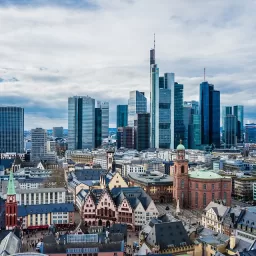LED stands for Light Emitting Diodes. This technology has actually been with us for a very long time. They began life as components in electronic appliances, such as televisions, computers, remote controls and digital clocks. Now they are even lighting our homes. You will hear a lot of people claiming that LED Light Bulbs are ‘revolutionising’ the lighting industry, but you may also be wondering why exactly this is. The advantages they hold over conventional forms of lighting are many and varied. This article will take you through a few of them.
Energy Efficient
One of the main drawbacks of traditional lighting is that a lot of the energy they consume is wasted. In fact, only about 10 per cent of a typical light bulbs energy is converted into useful light, the rest is lost as wasted heat. This is largely due to their design and the filaments they use. LED Lights do not have the same problem. They convert about 90 per cent of the energy they use into useful light. This means they use a lot less energy in achieving the same brightness. It only takes about 4 watts in energy for an LED Bulb to achieve 60 Watts of brightness. This is even more impressive than Compact Fluorescent Lamps (CFLs).
Long Lasting
The average lifespan of an incandescent bulb is about 1,000 hours. This is because their delicate filaments heat up and burn out quite quickly. As such, you can expect to be changing your bulbs a couple of times a year, a cost that mounts up over time. Because they don’t rely on a filament, LED Bulbs can last much longer. They last anywhere between 30,000 and 50,000 hours. As such, you will only be changing an LED Light once over a period of several years.
Cost
One of the biggest drawbacks about these Bulbs is cost. The initial asking price for an LED Bulb is significantly higher than incandescent. However, you should not be put off by this. These are designed to pay for themselves overtime, so instead of baulking at the immediate price, you should calculate the cost over a long period of time.
The actual cost of an incandescent bulb is a lot more than its initial price. Overtime you will end up paying much more in labour expenses, replacement costs and electricity bills.
Due to their low energy use and longer lifespan these Lights begin paying for themselves very quickly by lowering your electricity bills and maintenance costs.
Versatility
LED can be manufactured to very small sizes, which makes them a lot more versatile. Most of these Lights are classified as ‘retrofit.’ This means they will swap straight over with your existing bulbs without the need for rewiring. The range of LED Light Bulbs now include all standard light fitting, such as 240V GU10 and12V MR16 Spotlights, and domestic fittings such as B22 Bayonet Cap and E27 Edison Screw.
Durable
LED Lights are actually a lot more durable than standard light bulbs. Incandescent bulbs and halogens are quite fragile, particularly their delicate filaments. LED Light Bulbs can withstand a lot of punishment before they break, making them even more versatile.
The energy efficiency and cost effectiveness of LED Light Bulbs is really driving demand and in the near future you can expect them to be used in even more commercial and domestic light setups. It really is time to say goodbye to wasteful incandescent bulbs and ephemeral Compact Fluorescents.
BY by GAHZLY
#Benefits #LED #Light #Bulbs



